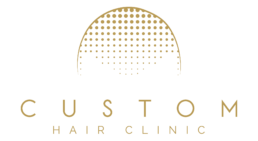Why You Should Choose SMP: The Benefits of Scalp Micropigmentation
Scalp Micropigmentation Benefits
Scalp micropigmentation, also known as SMP, is a non-surgical hair loss treatment that uses a special tattooing technique to create the appearance of hair follicles on the scalp. The procedure is a quick and effective solution for those struggling with thinning hair or baldness. In this blog post, we will discuss the benefits of SMP and why it is becoming a popular choice among men and women experiencing hair loss.
- Natural-Looking Results SMP is designed to mimic the natural look of hair follicles. The pigment used in the treatment is carefully matched to the color of your natural hair, ensuring a seamless and natural-looking result. The procedure can also be used to camouflage scars from hair transplants, injury, or medical conditions such as alopecia.
- Non-Surgical and Minimal Recovery Time Unlike hair transplants, SMP is a non-surgical procedure. There is no cutting, incision, or recovery period required. The procedure is minimally invasive and the recovery time is minimal. You can return to your normal activities immediately after the treatment.
- Cost-Effective SMP is a more cost-effective solution compared to traditional hair transplants. It requires fewer sessions and the results can last for several years with touch-ups.
- Suitable for Short Hair SMP offers a great solution for people who want a short hairstyle as it eliminates the need to hide the scalp. It also works well for people with curly hair, as it eliminates the need to cut the hair short.
- Safe and Highly Effective SMP is a safe and highly effective hair loss treatment option that can be customized to suit your needs. It's important to find a reputable and experienced technician to ensure the best results.
It's important to note that SMP is not a solution for active hair loss, it's best for people who are stable in their hair loss, if you are experiencing active hair loss, it is best to address the underlying cause before considering the procedure.
Scalp Micropigmentation: The Solution for Thinning & Balding Hair
Are you struggling with thinning hair or baldness? Scalp micropigmentation, also known as SMP, may be the solution you've been looking for.
SMP is a non-surgical treatment that uses a special tattooing technique to create the appearance of hair follicles on the scalp. This technique involves the use of a micropigmentation device, similar to a tattoo gun, to deposit pigment into the skin. The pigment is carefully matched to the color of your natural hair, and the procedure is performed by a trained and experienced technician.
The result is a natural-looking head of hair, even for those with severe hair loss. The treatment can also be used to camouflage scars from hair transplants, injury, or medical conditions such as alopecia.
One of the benefits of SMP over other hair loss treatments such as hair transplantation is its simplicity and minimal recovery time. After the procedure, there is usually no pain, and you can return to your normal activities immediately. It is also much lower in cost than traditional hair transplants.
The procedure typically requires 2-3 sessions with an expert technician. Once completed, the result will last for several years, with touch-ups needed to maintain the color and density.
The other benefit of Scalp Micropigmentation is that it offers a great solution for people who want a short hairstyle, as it eliminates the need to hide the scalp. It also works well for people with curly hair, as it eliminates the need to cut the hair short.
It's also important to note that while scalp micropigmentation can create the illusion of hair, it will not stop or reverse hair loss. It's best for people who are stable in their hair loss, if you are experiencing active hair loss, it is best to address the underlying cause before considering the procedure.
If you're looking for a way to improve your hairline and restore the look of a full head of hair, scalp micropigmentation may be the right choice for you. It's important to find a reputable and experienced technician to ensure the best results. With SMP, you can regain confidence in your appearance and enjoy a natural-looking head of hair once again.
Lichen Planopilaris Cover Up
Lichen Planopilaris Cover Up
A quick google search on Lichen Planopilaris may lead one to believe that there exist no medical treatments for the prevention of hair loss as a result of this genetic condition. Some blogs may suggest avoiding certain foods, while others claim medications such as creams, gels and tablets can help tame and minimize hair loss. While there to exist cases in which these remedies have succeeded, they are far from guaranteed solutions and rely on several external factors to be effective; as a result, some individuals may benefit while others may find no effect. Surprisingly, few blogs will suggest SMP as a guaranteed solution to the dreaded hair loss associated with Lichen Planopilaris.
SMP, or Scalp Micropigmentation creates the look of fuller hair through the insertion of pigmentation. Afflicted with Lichen Planopilaris and nothing is working for you? Don’t lose hope, SMP may be the solution you’ve been searching for! Custom Hair Clinic is proud to have been able to help victims of Lichen Planopilaris in similiar situations. Before and after photos of one of our beloved client’s procedures can be seen below; safe to say he feels more confident than ever. Your self-confidence is key, don’t settle for anything less than your best.
Sincerely,
Shawn






